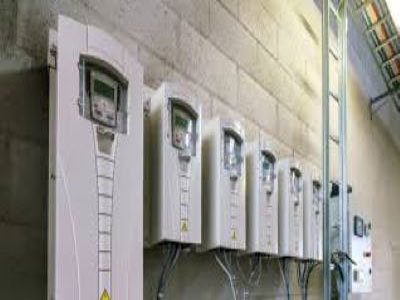Key Takeaway
Variable Frequency Drives (VFDs) offer several key benefits. They significantly contribute to energy savings by adjusting motor speed to match the required load, reducing overall energy consumption. VFDs also help in managing peak energy demand, lowering operational costs. They enable precise speed control, ensuring smooth and controlled starting, stopping, and acceleration of motors, which extends equipment lifespan. With dynamic torque control, VFDs provide consistent performance ideal for applications like elevators and escalators. These advantages not only enhance operational efficiency but also contribute to a more sustainable and cost-effective industrial environment, making VFDs essential for modern industrial automation solutions.
Energy Efficiency and Cost Reduction
Implementing a Variable Frequency Drive (VFD) can significantly enhance energy efficiency and lead to considerable cost savings. By adjusting the motor speed to match the actual demand, VFDs reduce the energy consumption of electric motors, which are typically one of the largest energy consumers in industrial applications. This adjustment helps in avoiding the energy wastage associated with running motors at full speed when it is not necessary.
For instance, in a pumping system, a VFD can reduce the speed of the pump during periods of low demand, thereby saving energy. This translates to lower electricity bills and can lead to substantial savings over time. Additionally, the reduction in energy consumption also means a smaller carbon footprint, contributing to environmental sustainability. The initial investment in VFD technology is quickly offset by the energy savings and reduced operational costs, making it a smart financial decision for industrial facilities.

Improved Process Control and Flexibility
One of the standout benefits of VFDs is the enhanced process control and flexibility they offer. VFDs allow precise control over motor speed and torque, which is crucial for applications requiring variable speeds. This capability leads to improved product quality and consistency. For example, in conveyor systems, VFDs can adjust the speed to handle different types of materials efficiently, ensuring smooth and precise operation.
The flexibility of VFDs also means that they can be easily integrated into existing systems, allowing for upgrades and changes without significant disruptions. This adaptability is particularly valuable in industries where process requirements can change frequently. Moreover, the ability to fine-tune motor performance can result in better overall system efficiency and productivity. In essence, VFDs offer the agility needed to meet the dynamic demands of modern industrial processes, enhancing both operational efficiency and output quality.
You May Like to Read
Extended Equipment Lifespan
Using VFDs can significantly extend the lifespan of your equipment. Motors and other mechanical components often experience less wear and tear when operated under controlled speeds and conditions. VFDs help in soft starting and stopping of motors, which reduces the mechanical stress associated with sudden starts and stops. This gentle handling prevents damage to motor windings and other components, prolonging their operational life.
Moreover, the ability to control acceleration and deceleration rates minimizes the risk of mechanical failures. For example, in HVAC systems, VFDs can ramp up the fan speed gradually, avoiding the sudden stress that can cause premature failure. This not only extends the life of the motor but also reduces maintenance costs and downtime. The extended lifespan of equipment translates to higher reliability and lower total cost of ownership, making VFDs a wise investment for any industrial operation.
Reduced Environmental Impact
VFDs play a crucial role in reducing the environmental impact of industrial operations. By optimizing motor speed and efficiency, VFDs contribute to lower energy consumption and, consequently, reduced greenhouse gas emissions. This is particularly important as industries strive to meet stringent environmental regulations and sustainability goals.
In addition to energy savings, VFDs can also reduce the noise levels of machinery. By operating motors at optimal speeds, VFDs help minimize the noise generated by mechanical components, creating a quieter and more comfortable working environment. The combined effect of reduced energy consumption, lower emissions, and decreased noise pollution makes VFDs an environmentally friendly solution that supports the global push toward greener industrial practices.
For industries, adopting VFDs means not only enhancing operational efficiency but also aligning with global sustainability efforts. The technology ensures that machinery operates at peak performance with minimal environmental footprint. This is essential for companies aiming to balance productivity with environmental responsibility.
By integrating VFDs into industrial systems, businesses can significantly impact their overall environmental performance. This technology is a step forward in achieving both economic and ecological objectives, making it indispensable in modern industrial practices.
Enhanced Motor Protection
VFDs offer advanced motor protection features that safeguard motors from various electrical issues. These drives can monitor motor conditions in real-time, providing protection against overvoltage, undervoltage, and phase loss. This continuous monitoring ensures that motors operate within safe parameters, preventing potential damage and costly repairs.
Furthermore, VFDs can detect and respond to motor overheating by adjusting the speed or shutting down the motor to prevent damage. This proactive protection mechanism enhances the reliability and safety of motor operations. For example, in critical applications such as water treatment plants, the ability of VFDs to protect motors ensures uninterrupted service and avoids catastrophic failures. Enhanced motor protection not only extends motor life but also improves the overall reliability and safety of industrial systems.
Conclusion
In summary, the implementation of Variable Frequency Drives (VFDs) in industrial applications brings a multitude of benefits. From substantial energy efficiency and cost reduction to improved process control and flexibility, VFDs are indispensable tools for modern industries. They contribute to extending the lifespan of equipment, reducing environmental impact, and providing enhanced motor protection. These comprehensive benefits make VFDs a valuable investment that boosts operational efficiency, sustainability, and reliability. For newly joined engineers, understanding and leveraging the advantages of VFDs can lead to more efficient and effective industrial operations, paving the way for innovation and growth in their respective fields.
